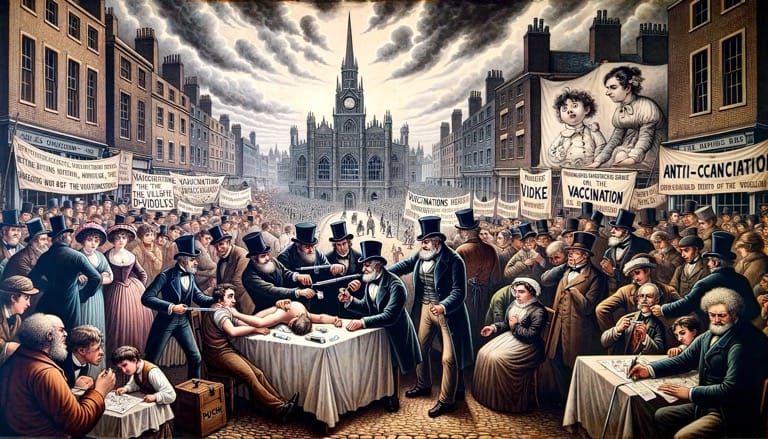The Battle Against the Needle: Unveiling the Philosophical and Militant Stance of Victorian Anti-Vaccination Movements

In the late 18th and 19th centuries, the introduction of smallpox vaccination by Edward Jenner ignited a fierce debate in Victorian Britain, encapsulating a clash of medical innovation against deep-seated societal fears and beliefs. Jenner, despite his groundbreaking discovery, faced ridicule and skepticism from various quarters, including medical professionals and the general public. His technique, though revolutionary, seemed bizarre and untested, leading to widespread fear and opposition.
The depiction of Jenner's vaccination process in satirical cartoons and anti-vaccination propaganda played a significant role in shaping public opinion. Illustrations by artists like James Gillray, depicting grotesque transformations and adverse reactions to the vaccine, fueled the fire of skepticism and fear. Such representations often exaggerated the risks and played on the anxieties of a society grappling with the idea of introducing foreign substances into the human body.
The government's move in 1853 to mandate vaccination for all newborns escalated the controversy. The compulsory nature of this policy sparked widespread riots and demonstrations, bringing to the forefront not only the debate over the medical risks and benefits of vaccination but also the ethical and philosophical questions about individual rights and state authority.
Anti-vaccination campaigners raised several arguments. They pointed to the lengthy, painful, and sometimes life-threatening nature of the vaccination process. Parents were particularly concerned about the lack of incontrovertible evidence that vaccination guaranteed protection against smallpox. Moreover, the idea of inserting animal matter into the bodies of infants was seen as an affront to their natural purity and a potential source of other diseases.
This period also witnessed debates over the causes of smallpox and the effectiveness of vaccination versus alternative methods like cleanliness and sanitation. Notable figures like Florence Nightingale advocated for hygiene as a key factor in combating the disease, further complicating the public discourse.
The introduction of the Conscientious Objector clause in 1898 marked a turning point, allowing parents to opt out of vaccinating their children. This legislative change was a response to the growing dissent but also intensified the debate, bringing issues of class, gender, and the role of government in public health decisions to the forefront.
The anti-vaccination movements in Victorian Britain, therefore, reveal a complex web of medical, ethical, and social dynamics. They underscore the challenges faced in balancing public health concerns with individual liberties and the diverse reactions that medical advancements can provoke in society. This historical episode offers valuable insights into understanding contemporary debates on vaccination and public health policies.



Comments ()